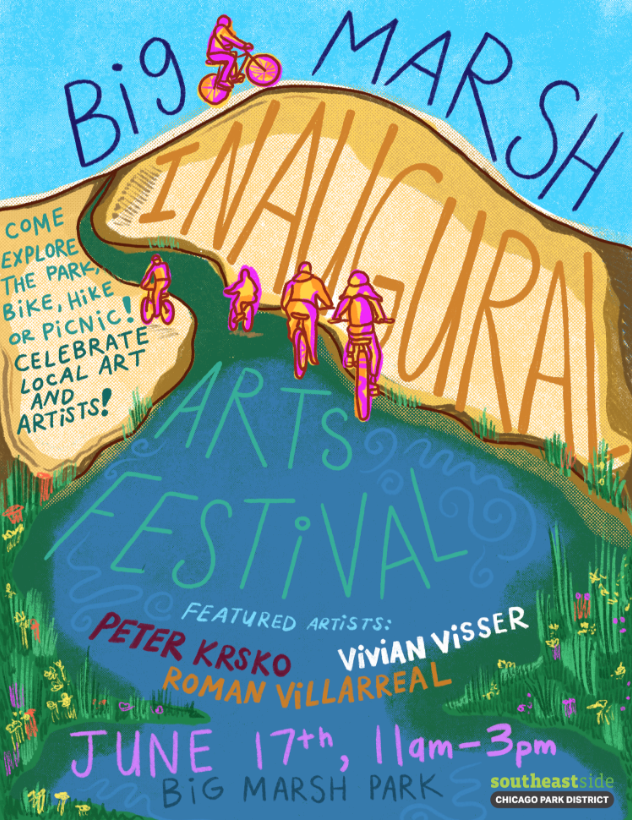Kickoff summer at the FREE inaugural Big Marsh Arts Festival, a family-focused event to celebrate local art and artists and recognize several recent art installations at Big Marsh Park. Guests are invited to participate in workshops and activities (pre-registration may be required), explore the park, bike, hike, and picnic and bring a bike or rent one here. The newly opened Nature Trail Café will feature summer sandwiches, wraps, and drinks.
*Weather permitting, most of the festival will take place outside, with the potential to hold a class or demonstration inside the Ford Calumet Environmental Center.
Event Details
C2ST will be under the Pavilion outside the Ford Calumet Environmental Center with Masa and Corn: From Mexico to the World (Art, Culture, and Science of Food). Families will use three ingredients, masa powder, salt, and water, to form a dough and make tortillas/sopes into shapes that resemble what they imagine/feel when engaging with the corn.
What is corn? Corn is a tall annual cereal grass (Zea mays) widely grown for its large elongated ears of starchy seeds. The seeds, also known as corn, are used as food for humans and livestock and as a source of biofuel and can be processed into a wide range of useful chemicals.
Maize represents traditional knowledge, identities, songs, and the protection of Mother Earth, and it needs to be protected against many threats that have intensified in the last decades.
Corn is part of Indigenous creation stories, passage rituals to adolescence, the mingas (community gatherings), and deities in the spirit world. Oral tradition has been fundamental for transmitting knowledge about corn from generation to generation. “In the house after dinner, the father begins to tell how the corn is planted, so the information is transmitted to the children,” explains Aquian Guamán of the Karos Nation of Peru. In the same way, Maya elders and adults retell their creation story about why human beings were created from corn after three failed attempts to create human beings for younger generations.
Corn has been considered a sacred plant and important food to many Indigenous Peoples for over 3,000 years, from the north to the Southlands of Abya Yala. NSF.gov cites that corn was first domesticated 8.700 years ago in Mexico. Wild Grass Became Maize Crop More than 8.700 Years Ago
Communities with diverse climates continue to utilize corn as a main staple of their diet and an important part of Indigenous philosophical and spiritual practices and identities.
“We are like a corn husked and watered on all sides; we are all a variety of corn,” said conference participant Carmen Lozano (Kichwa). Elder Duane ‘Chili’ Yazzie (Diné) commented, “We come from four worlds. This is the fourth world, and we are four peoples. The blacks take care of the water, the blue ones the air, the white ones the fire, and we, the dark ones, take care of the earth. Corn is a must to live. The first woman was given corn, a symbol of fertility. As the first people, we feel the pain of Mother Earth.”
This strong bond with corn and other plants, animals, and waters makes Indigenous Peoples stewards of all forms of life in their territories. Corn and Indigenous communities have had a special and mutually dependent relationship, evolving since the domestication of a grass called Teocintle to corn 3,000 years ago.
